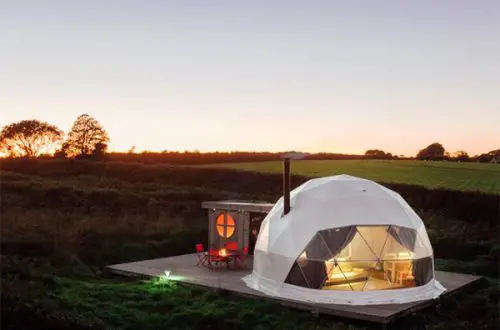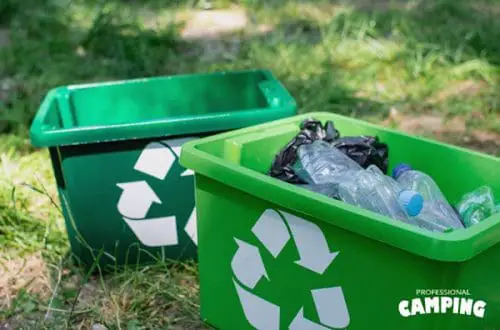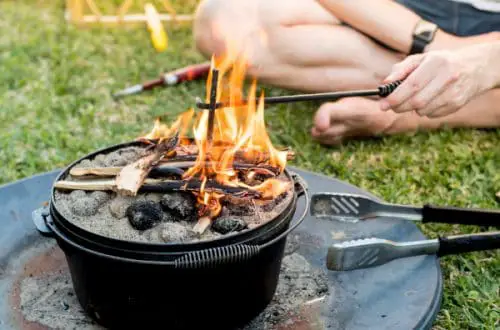Expert Advice: How to get started Geocaching
Table of Contents
Geocaching is a fun and thrilling way to explore the great outdoors. Read on to discover how to get started geocaching.
For most of us, going outside isn’t something we need to be pushed to do, rather something we enjoy taking up on our own. But if you’re thinking of a way to spice of a family-friendly hike or add some adventure on your solo trip then geocaching is a great way to not only exercise your body but also your brain and mind.
Whether you’re young or old, geocaching offers something for everyone. Now, if this is your first time hearing about geocaching, don’t worry, in this article we’re going to talk about what it is and how you can get started!
Interested in learning how to get started geocaching? Well, then keep on reading!
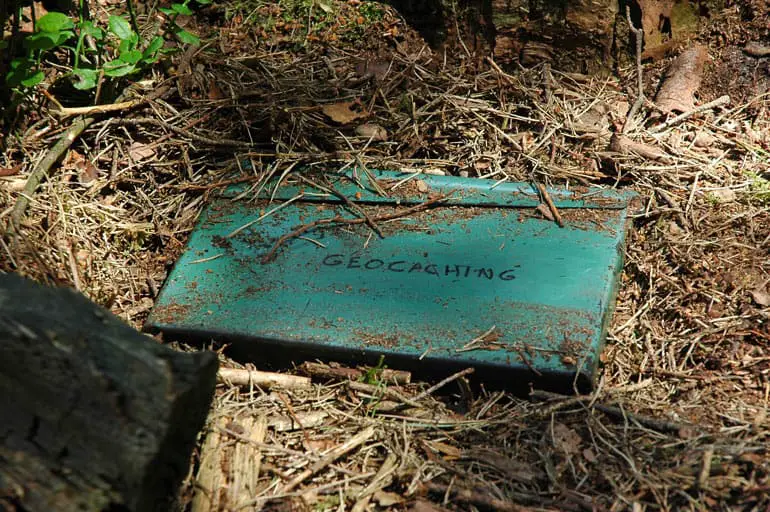
Geocaching terms
Before we go any further, you’re going to be seeing terms that you may not know. This game does have some words which aren’t commonly used, so before we talk about the game, let’s get you acquainted with some important terms.
When you get into a game, you start to realize that there are many terms strictly dedicated to that game. There are a few common terms that you’ll hear in geocaching which you should know.
- Trackable: this is an item tagged with a specific id code. These items are found in geocaches and their travels are tracked online. They’re also known as “travel bugs”. Many trackables also have travel goals. For example, taking a trackable from the east coast to the west coast.
- Geocacher: this is a person who plays geocaching.
- Cache: this is a short version of the terms “geocache”.
- Muggle: yes, it is actually based on Harry Potter. A muggle is a non-geocacher. When you’re looking for a geocache, you need to be wary of muggles so that the geocache location is not exposed. If muggles see the geocache it becomes vulnerable to theft and vandalism.
- Logbook: this is a piece of paper which is found in the geocache. A logbook allows a geocacher to sign their name and leave a physical copy of all the people who’ve found the geocache.
- Geocache: this is a waterproof box which holds trinkets and a logbook. The geocaches are hidden in special areas and then listed on a geocaching website such as geocaching.com. The GPS coordinates are placed online and geocachers are then allowed to find the geocache. Their location can be on hiking trails or in even more urban locations.
Now that you know some important geocaching terms, it’s time we helped you understand what geocaching really is. We’re going to talk about what is it, what it entails and how to play it.
What is geocaching?
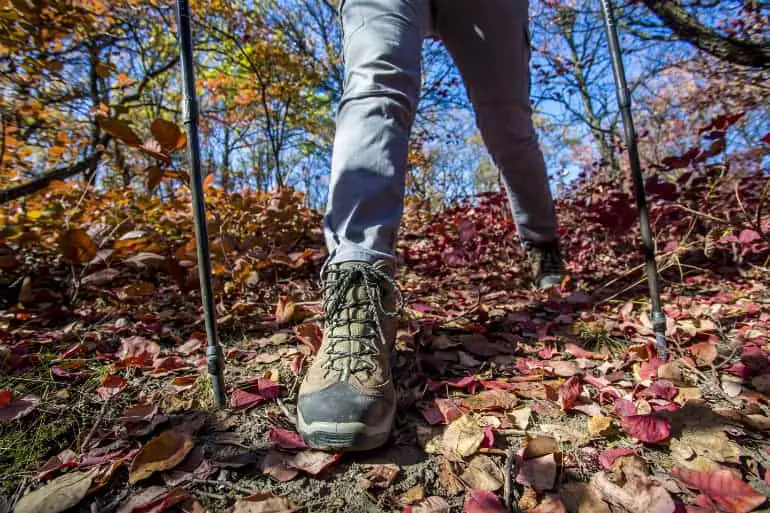
If this is your first time hearing about geocaching then you’re probably wondering what it’s all about. As this is a relatively new sport, it’s understandable why you’re just hearing about it now.
In essence, geocaching is a real-world outdoor adventure which is constantly occurring all over the world. Users have a GPS receiver, a set of coordinates and sometimes even clues in order to find the hidden cache.
But you’re not hunting for a hidden treasure chest. Instead, you’re trying to find a cache of eco-friendly treats. Though you only need a GPS in order to locate caches, it’s not as simple as it sounds.
The entire purpose of this activity is for you to search for them, meaning that you’re going to have to really hunt for them. This was just a simple description, but we’re going to give you more depth to it now.
What’s a cache?
You read that with geocaching, you’re going to be finding eco-friendly treats but what does that even mean?
Well, first off, these “treats” are called caches. Caches are hidden all over the world and are left by fellow geocachers. They leave little trinkets that are then stuffed into a weatherproof box and have a sign-in log book for you to enter your information.
Caches can be hidden right in the middle of the city or out in the rural wilderness. The coordinates of these caches are placed on geocaching website where geocachers can seek information. Not only will you be given coordinates on these websites but you will also be able to upload photos and share geocaching stories with others.
Levels of difficulty
Not all geocaches are made the same which is great because you’re able to increase the challenge if you feel the need to. Caches are usually rated between 1 to 5 stars which indicates the terrain and level of difficulty.
The levels of difficulty indicate not only how hard it’ll be to find them physically but also mentally. If this is your first time, you’ll probably want to start off with a level 1 or 2 geocache.
For level 1 difficulty rating, this means that they’re usually easy to find and is wheelchair-accessible. If it’s rated 5, then the geocache is extremely hard to find, both physically and mentally, and will also require tools to help you locate it. These geocaches may require hard hikes, so, for this, it’s important to be physically fit.
Types of Geocaches
Before learning how to play the game, it’s important to know that there are different types of geocaches.
You know now that caches are small trinkets and treasures that are placed in waterproof boxes for geocachers to find. However, there are different types of geocaches for adventurers to find.
Traditional Cache
The traditional cache is what we talked about above. They’re small trinkets which can range from pens, disposable cameras, keychains, etc. The trinkets are usually travel based.
Mystery Cache
The cache could be in the form of a puzzle. By reaching each coordinate, you get one step closer to solving the big puzzle. Some of the clues may be encrypted or you need to solve ciphers.
Multi-cache
This is a type of cache which involves more than just one cache. For example, by opening one cache, you’re then directed with coordinates to another cache.
These are the main types of cache which can change up the way you choose to geocache. If you’re looking for more elements or would like to stick to traditional caches, you’re able to decide for yourself.
What do you need to get started?
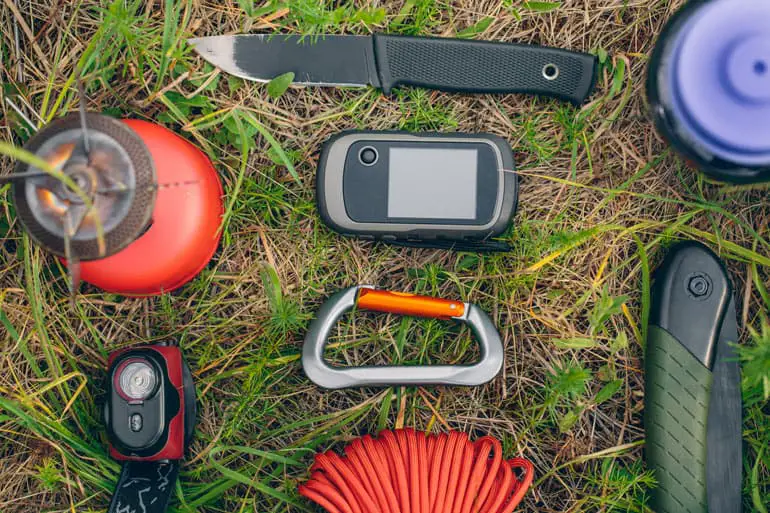
Okay, so you may be wondering about what you’re going to be needing to take along with you for your geocaching adventure.
Well, naturally, having a GPS receiver, topo map, and compass are essential items but is there something else? Though you have the basics covered, you may want to consider taking along some of these items that we’ll list below. They’ll help keep you safe and your adventure fun.
- Extra batteries: though you may have your essentials with you, your GPS receiver will be useless if you run out of batteries. Carrying extra batteries along with you will help you out in case of an emergency.
- Flashlight: though you may think that finding a cache will only take you a couple of hours, you’ll be surprised how challenging it can be. It may only take you a couple of hours as you thought, or, it could take you all day. Don’t play a guessing game when it comes to time. Instead, be prepared for the night to fall faster than you thought.
- Cache trinkets: if you’re looking for a geocache, then you should leave a little token behind for the next geocache. Now, this doesn’t mean you need to bring something expensive and large. On the contrary, you should focus on trinkets which are small, eco-friendly, and lightweight. Some trinkets could be biodegradable toys, marbles, keychains, and pens.
- Water: we tend to get carried away when we’re doing tasks, however, it’s important that you stay hydrated in order to keep your body and mind in shape. Make sure you have enough water with you for the entire day.
- First-aid kit: now this doesn’t mean anything is going to happen to you but why play with fire and come unprepared? Regardless if you know the terrain or not, you should make sure that you pack the basics. Do research about the terrain before geocaching so that you can get an idea of the terrain. You may need specific items for the selected environment.
- Notebook and pen: you’ll want to make sure that you’re logging down your found caches. You should be recording the waypoints and coordinates in case you need them for future reference. In addition, you should always note down the surrounding landscape. Make sure you also throw a pencil or pen in your bag as well.
- Outerwear: you have no idea how the weather is going to be. Sure, one moment it may be sunny but are you going to put all your trust into the weather? Exactly. With that being said, you should always bring along with you proper outerwear to protect you from the elements such as rain, hail, and, wind.
Geocaching etiquette
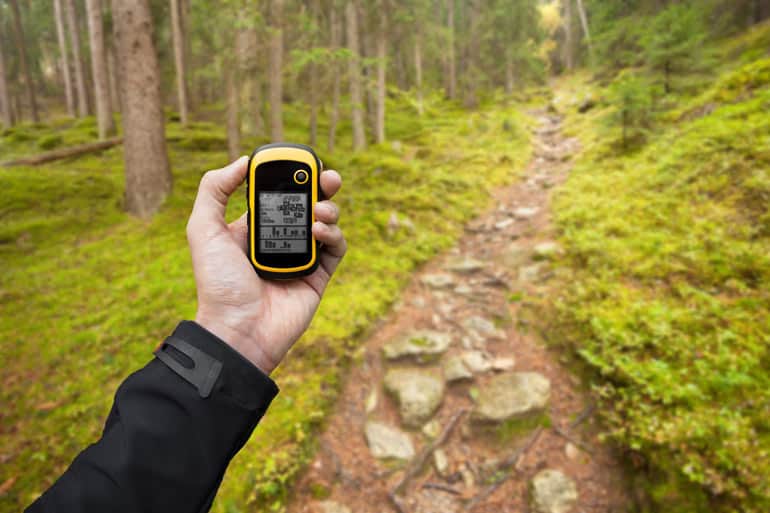
Now, you’re probably thinking etiquette? What do you mean by etiquette? With every game, there’s always some form of etiquette that you need to keep in mind.
You may not think that etiquette is important, however, by adopting the geocaching etiquette, you’re helping to keep geocaching alive and well. Here are some of the most important geocaching etiquette rules that you should be following if you want to enjoy the experience.
- Treat others with respect: yes, this is important when it comes to any game. When you’re geocaching, there’s a high chance you’re going to run into other geocachers. If you want to have a good time, you need to remember to treat other geocachers with respect.
- Geocachers should be hidden: of course, you don’t want to make it impossible for others to find but at the same time, you don’t want the geocache to be sitting out in the open. You want to focus on making the geocache hidden, however, without harming the surrounding environment.
- Sign the register: you don’t have to necessarily do this, but, it’s definitely a nice gesture and tradition to sign the register which will be found in the geocache. That way, it shows the geocache owner who’s been there and also fellow geocachers as well. You can also go online to any geocaching website and record your visit as well.
- Camouflage the geocache: You should make sure that the waterproof box is camouflaged so that it fits well into its environment. Try not to harm its surrounding environment, however, try to make it relatively unseen.
- Exchange trinkets: these trinkets are also called “trade items” and you can trade them with other items of equal value.
- Travel bugs aren’t trade items: these are typically used to travel the world. Now, you may take them, however, you need to put them back into another geocache. Make sure to tag the travel bug number so that the owner can trace its whereabouts. That’s the whole point – to see where it ends up.
- Return the geocache: once you’re done with the geocache, it’s important that you return it exactly where you found it. Don’t try to find a complicated spot to place it in.
- Don’t expose the geocache: as a geocacher, you should refrain from exposing the waterproof box to others. You don’t want to ruin other geocachers fun. When you find a geocache, remove it from its site prior to looking inside.
- Follow CITO: this is an age-old principle that’s been followed by all geocachers. CITO means “Cache In, Trash Out”. In other words, geocachers, along with their journey, should collect litter and properly dispose of it. Take the extra step in making sure the environment is kept clean!
The Basic Guidelines
Before you learn how to play, you need to know the basic rules that geocachers follow. Naturally, as the game continues to evolve, so do the guidelines.
So, it’s important that you check out some of the main geocaching websites just to freshen up on the rules However, there are some core guidelines which are fundamental. Here are some of them.
- It’s important that you do not cross into private property without permission from the owner.
- Do not place the caches on private property without permission or place them in national parks or wilderness areas.
- Maintain a “No Trace” philosophy during your geocaching adventure, leaving nothing behind.
- Do not place any flammable or dangerous materials inside the cache.
These are basic guidelines which all geocachers follow. By following these guidelines, you’ll ensure that your experience is eco-friendly and safe.
How to Play
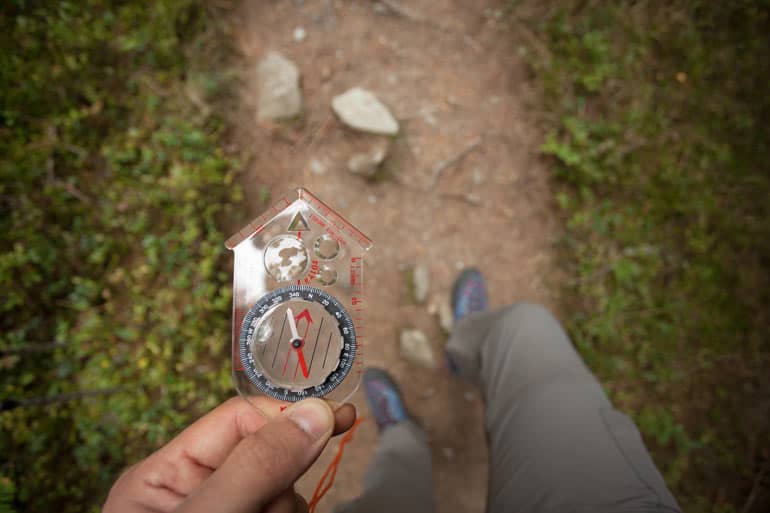
Like we talked about previously, geocaching is basically navigating through terrain with a GPS receiver in order to find geocaches.
Now, so play the game it’s quite easy to start. Essentially, you’ll mainly be relying on your GPS-enabled device to help you find a geocache. Here are the basic steps that you need to follow in order to start your adventure:
- Find a geocaching website that you’d like to join. Websites such as geocaching.com will allow you to create a free account. You’ll be able to view a database of geocache listings to choose from.
- On the website, search up geocaches which are located nearest to you or in locations that you wish to explore.
- On your GPS-enabled device, enter the coordinates.
- Once the coordinates are entered into the device, follow them. Naturally, you should always be aware of your surroundings while following your GPS.
- You’ll finally reach the coordinates. Once you arrive, you can put your GPS-enabled device away and start looking for the geocache. Don’t rely on the GPS-enabled device to help you get an accurate reading. You’ll need to look for yourself.
- Once you’ve found the geocache, take the time to sign the log book. There may be trinkets inside the geocache in which you’re more than welcome to take something or leave something of your own.
- Place the geocache exactly where you found it.
- Once you arrive back home, go online to the geocaching website and log your experience.
That’s it! Not as hard as you thought, right? But don’t be fooled, though it looks easy, finding the geocache isn’t actually as easy as you thought. It definitely takes some hunting skills on your part.
Where to go geocaching?
Though you know how to play, you’re wondering where can you play this game? Good question. Well, geocaching is actually a lot more common than you initially thought.
In fact, there are almost 3 million geocaches hidden in over 180 countries worldwide. You weren’t expecting it to be that big, right? In reality, there’s probably a geocache located close to you right now. If you want to find if there’s a geocache is located near you, all you need to do is go online.
From there, you’ll be able to see where the closest geocache is located. Or, if you want to travel somewhere, you’ll be able to see where in the world all the geocaches are. So, if you were wondering where geocaches are, the answer is wherever you are.
How to find a geocache?
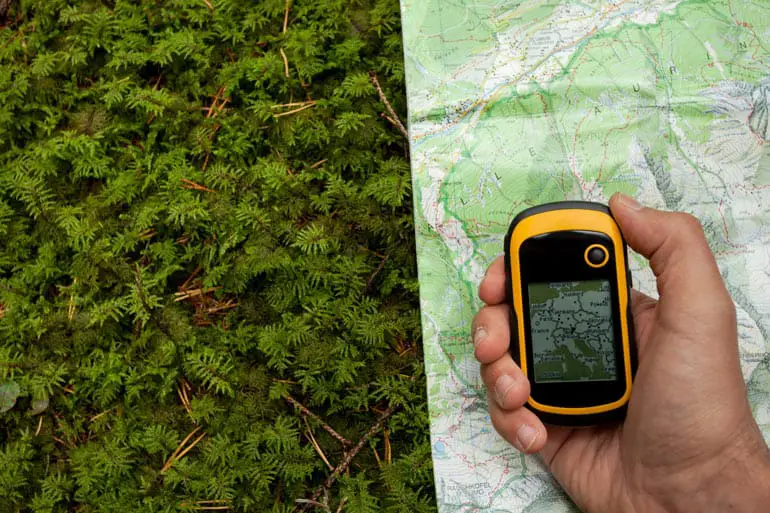
You may be wondering once you get to the location, how are you supposed to find the geocache? Do you just look under stumps or behind bushes?
Well, depending on your level of difficulty, it could be the case, but some hiding spots aren’t so simple. Here are some helpful tips when you’re trying to find a geocache:
- Focus on teamwork: you may not be able to find it on your own but with your friends and family, you’ll be able to find the geocache. Don’t be scared to work as a team in order to find the geocache.
- Any hints?: here’s the thing, there may be hints lying around that you just don’t see. Look online to see if the geocacher who hid the container left any hints or look at the last user activity. The point is, they may have said something that could help you greatly.
- They’re never buried: you don’t need to go digging in order to find your geocache. It’s above land, so there’s no need to bring out a shovel.
- Look everywhere: don’t just look low and high – look everywhere. Look over things, under things, through things, look wherever you can because it can be hidden anywhere.
- Don’t just look for a box: though we are telling you it’s a waterproof box, don’t think of a traditional box. You need to look for something small that can easily be disguised. That could literally be anything.
Now you know how to find a geocache. Though it sounds easy, it’s important that you follow these helpful tips when looking for the geocache. If not, you may spend your entire day looking for a geocache that’s been right under your nose.
Conclusion
Geocaching is a great activity if you’re looking for an adventure during your outdoor experiences.
Whether you’re with your family, partner or on your own, geocaching is a great way to become active and have fun. You can use geocaching to travel to new places or use it as a fun activity while you’re camping or hiking with friends and family. If you don’t have geocaching in your area, you can be the first one to introduce it, spreading the activity even further.
Physical exercise is great but sometimes you need something that’s mentally challenging as well. If this is the case, then you definitely should give geocaching a try. The best part is, you don’t need any experience in order to enjoy geocaching.


